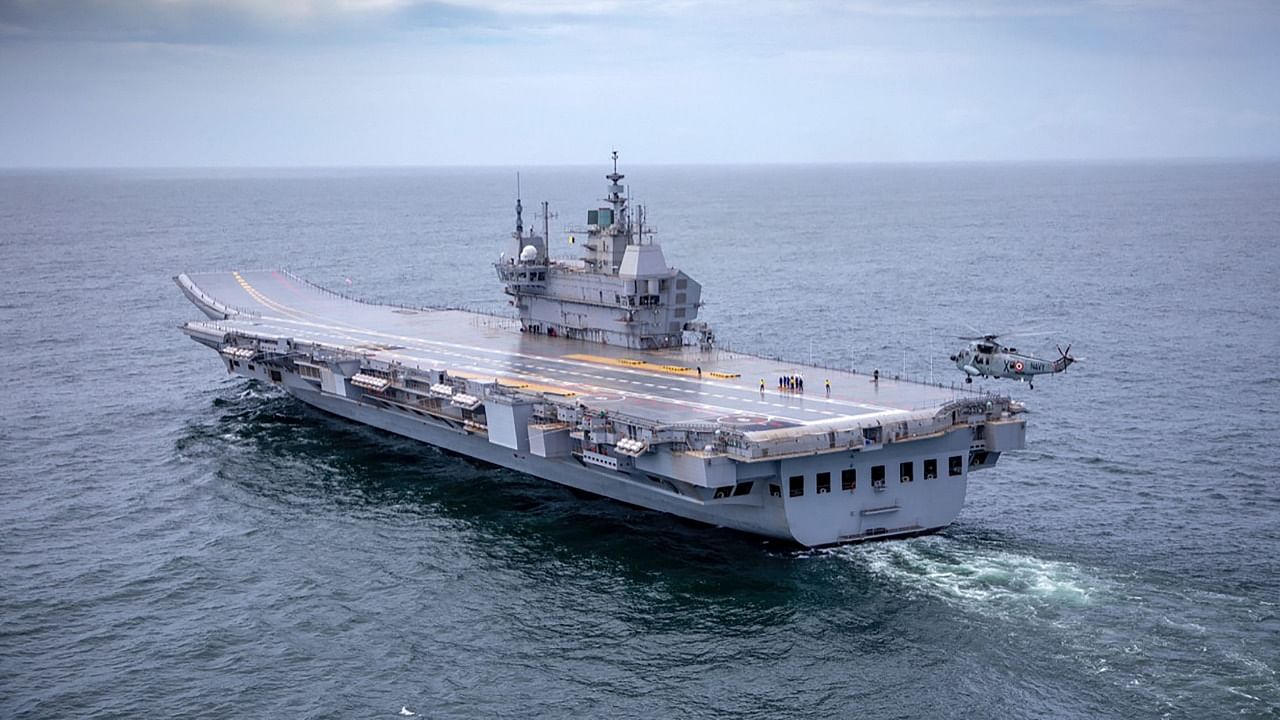
India has launched the sea-trial of its first indigenous aircraft carrier amid growing concerns in New Delhi over Chinese People’s Liberation Army Navy’s bid to expand its presence in the Indian Ocean.
The aircraft carrier is expected to be commissioned into the Indian Navy as the INS Vikrant in the first half of 2022. It is going to be the second aircraft carrier of the Indian Navy on active duty after the INS Vikramaditya, which India had purchased from Russia and which had entered into Indian Navy service in 2013.
Prime Minister Narendra Modi called it a “wonderful example” of the Make-in-India initiative launched by his government. He tweeted to congratulate the Indian Navy and the Cochin Shipyard Limited, which built the ship, for the “historic milestone”.
The Cochin Shipyard Limited had started works on the aircraft carrier in 2009 with the keel laid by A K Antony, the defence minister of the then Congress-led Government led by Modi’s predecessor Manmohan Singh.
“Proud & (and) historic day for India as the reincarnated #Vikrant sails for her maiden sea trials today, in the 50th year of her illustrious predecessor’s key role in victory in the #1971war,” the Indian Navy posted on Twitter. It referred to the key role the earlier incarnation of the INS Vikrant played in 1971 India-Pakistan war.
Once inducted into the Indian Navy, the new aircraft carrier will be named after the original INS Vikrant, which was decommissioned in January 1997.
The new incarnation of the INS Vikrant set sail for its maiden sea trial on Wednesday, just two days after the Indian Navy announced that it would soon send a task force of its eastern fleet to the South China Sea to take part in bilateral drills with the warships of Vietnam, Australia, Philippines, Malaysia and Indonesia – a move, which might rile up China. The four Indian Navy ships would also sail to the Western Pacific Ocean for the multilateral Malabar 21 exercise with India’s partners in the Quad – Australia, Japan and the United States.
India’s move to project its power in the Indo-Pacific region comes amid China’s growing belligerence in the South China Sea, East China Sea and Taiwan Strait and its PLA Navy’s forays in the Indian Ocean.
The new aircraft carrier’s propulsion plants will be put to rigorous testing during the sea trial in addition to the trials of various navigation, communication and hull equipment, according to a press-release issued by the government in New Delhi. Its basic design was developed indigenously by the Directorate of Naval Design of the Indian Navy and the entire detailed engineering, construction and system integration was undertaken by the Cochin Shipyard Limited, a public sector undertaking under the Ministry of Shipping.
The Indian Navy noted that the aircraft carrier was the largest and the most complex warship ever designed and built in India.
It is the largest warship built in the country having a displacement of about 40,000 tonnes, with approximately 2000 kilometres of cabling, 120 kilometres of piping and the 2300 compartments available onboard. The mammoth structure is built with 21,500 tonnes of special grade steel, which was developed indigenously and used in any Indian Navy ship for the first time.
The aircraft carrier – 262 meter long, 62 meter at the widest part and height of 59 meter including the superstructure – is a mini floating city, with a flight deck area covering the size of two football fields. It has a top speed of around 28 knots and cruising speed of 18 knots with an endurance of about 7,500 nautical miles. There are 14 decks in all, including five in the superstructure. The ship has over 2,300 compartments, designed for a crew of around 1700 people, including specialised cabins to accommodate women officers.
